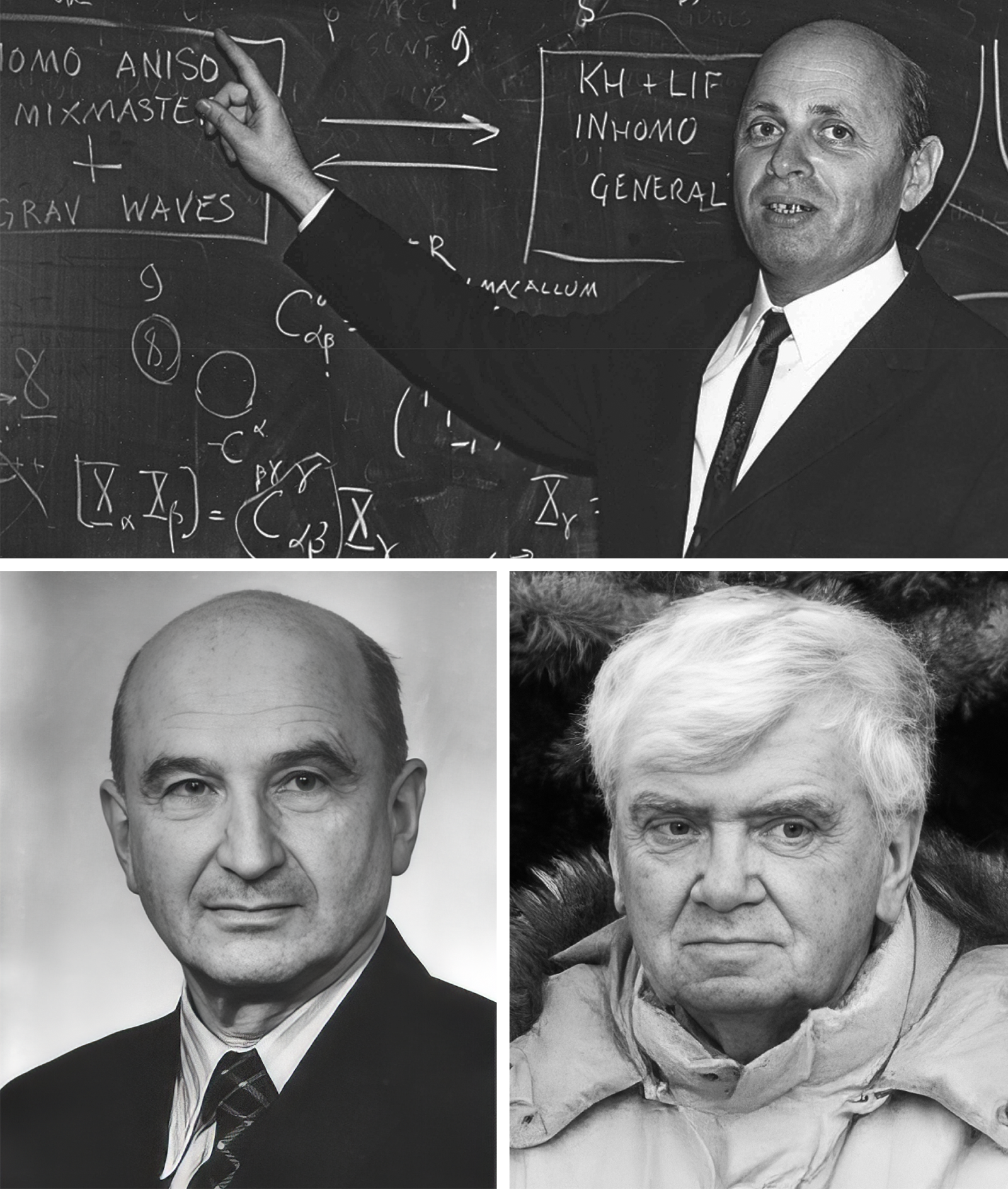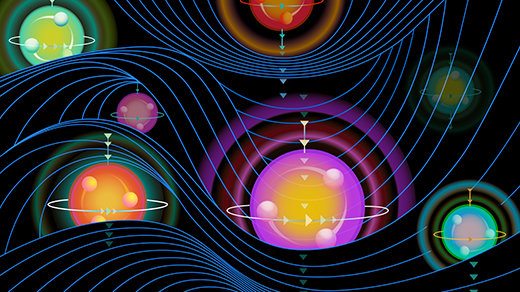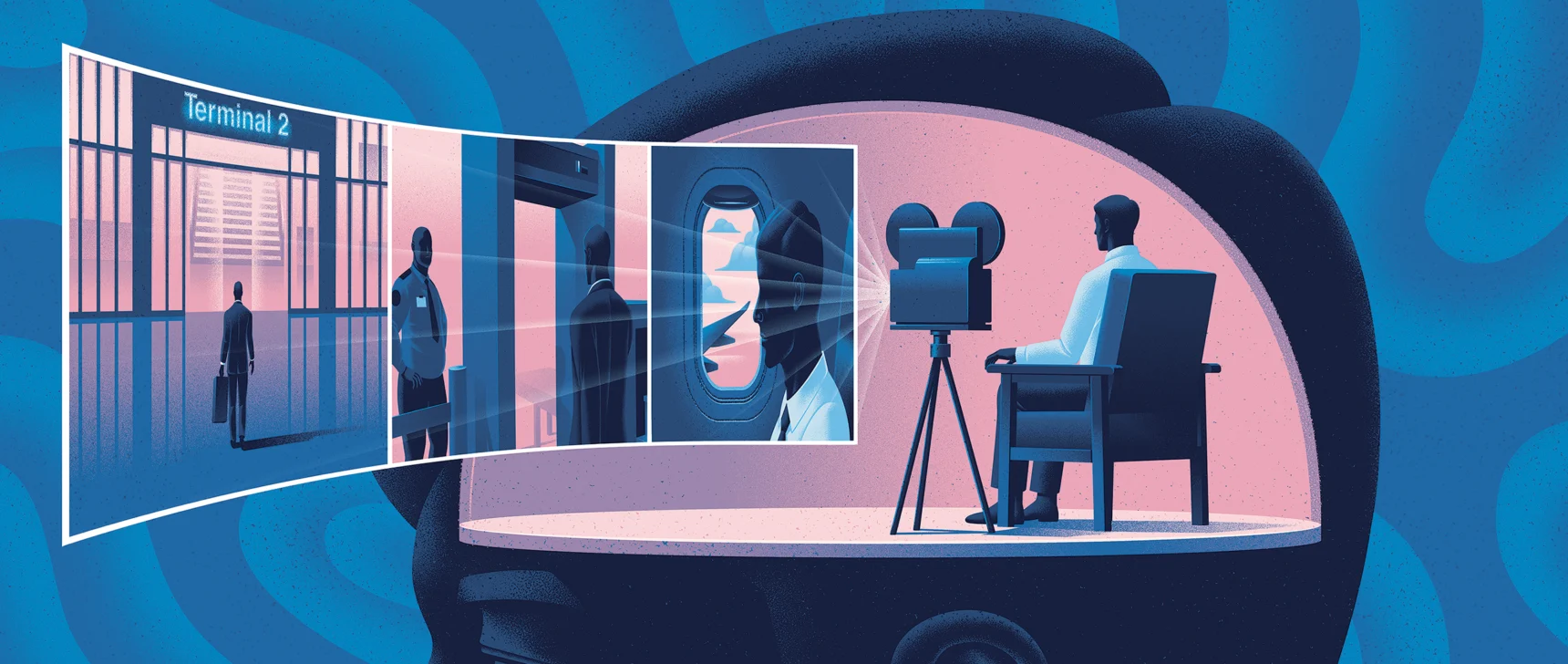New Maps of the Bizarre, Chaotic Space-Time Inside Black Holes
Introduction
At the beginning of time and the center of every black hole lies a point of infinite density called a singularity. To explore these enigmas, we take what we know about space, time, gravity and quantum mechanics and apply it to a place where all of those things simply break down. There is, perhaps, nothing in the universe that challenges the imagination more. Physicists still believe that if they can come up with a coherent explanation for what actually happens in and around singularities, something revelatory will emerge, perhaps a new understanding of what space and time are made of.
In the late 1960s, some physicists speculated that singularities might be surrounded by a region of churning chaos, where space and time haphazardly grow and shrink. Charles Misner of the University of Maryland called it a “Mixmaster universe,” after what was then a popular line of kitchen appliances. If an astronaut were to fall into a black hole, “one can imagine it mixing up the astronaut’s body parts in the way that a mixmaster or eggbeater mixes up the yolk and white of an egg,” Kip Thorne, a Nobel Prize–winning physicist, later wrote.
Einstein’s general theory of relativity, which is used to describe the gravity of black holes, uses a single field equation to explain how space curves and matter moves. But that equation uses a mathematical shorthand called a tensor to hide 16 distinct, intertwined equations. Several scientists, including Misner, had devised useful simplifying assumptions to let them explore scenarios like the Mixmaster universe.
Without those assumptions, Einstein’s equation couldn’t be solved analytically, and even with them it was too complicated for the numerical simulations of the time. Like the appliance they were named after, these ideas fell out of style. These “dynamics are supposed to be a very general phenomenon in gravity,” said Gerben Oling, a postdoctoral researcher at the University of Edinburgh. “But it’s something that fell off the map.”
In the last few years, physicists have been revisiting the chaos around singularities with new mathematical tools. Their goals are twofold. One hope is to show that approximations that Misner and others made are valid approximations of Einsteinian gravity. The other is to push closer to singularities in the hope that their extremes will help reconcile general relativity with quantum mechanics in a theory of quantum gravity, which has been a goal of physicists for over a century. As Sean Hartnoll of the University of Cambridge put it, “The time is ripe now for these ideas to be fully developed.”
The Birth of Mixmaster Chaos
Thorne described the late ’60s as a “golden age” for black hole research. The term “black hole” had only just come into widespread use. In September 1969, on a visit to Moscow, Thorne was given a manuscript by Evgeny Lifshitz, a prominent Ukrainian physicist. Together with Vladimir Belinski and Isaak Khalatnikov, Lifschitz had found a new solution to Einstein’s equations of gravity near a singularity, using assumptions the three of them had devised. Lifshitz was afraid Soviet censors would delay publication of the result, since it contradicted an earlier proof he had co-authored, so he asked Thorne to share it in the West.
Earlier black hole models assumed perfect symmetries not found in nature, positing, for example, that a star was a perfect sphere before collapsing into a black hole, or that it had no net electrical charge. (These assumptions allowed Einstein’s equations to be solved, in the simplest form, by Karl Schwarzschild shortly after Einstein published them.) The solution that Belinski, Khalatnikov and Lifschitz found, which came to be called the BKL solution after their initials, described what might happen in a messy, more realistic situation where black holes form from irregularly shaped objects. The result was not a smooth stretching of space and time inside, but a roiling sea of space and time stretching and compressing in multiple directions.
Thorne smuggled the paper back to the United States and mailed a copy to Misner, who he knew was thinking along similar lines. It turned out that Misner and the Soviet group had independently alighted on the same ideas using similar assumptions and different techniques. What’s more, the BKL group “used it to solve the biggest unsolved problem of that era in mathematical relativity,” Thorne said, concerning the existence of what is known as a “generic” singularity. Belinski, the last surviving member of the BKL trio, recently said in an email that Misner’s vivid descriptions in turn helped him to visualize the chaotic situation near the singularities that they both revealed.

Clockwise from top: Isaak Khalatnikov, Vladimir Belinski and Evgeny Lifshitz discovered chaotic black hole singularities in the late 1960s. At the time, Khalatnikov and Lifshitz were two of the most prominent Soviet physicists, while Belinski was in graduate school.
Clockwise from top: Photograph by Robert P. Matthews, Joseph Henry Laboratories, courtesy of AIP Emilio Segrè Visual Archives, Physics Today Collection; Melirius via Flickr; Litbook.ru
Understanding some of what they were uncovering requires grasping the ways that general relativity and quantum mechanics are at odds with each other. Notably, relativity posits that space-time must be continuous: You can look at arbitrarily small distances and never find a gap in it. In quantum mechanics, however, it becomes meaningless to talk about distances smaller than a limit called the Planck length — beyond that, we can’t know that there are no gaps in space-time. But the two theories have one commonality. Both are profoundly counterintuitive.
Relativity holds that two regions of space can be disconnected, meaning that nothing that takes place in one region can have any possible effect on the other. This might simply be because they are far apart — the speed of light is finite, after all. But regions of space-time can also become disconnected, or decoupled, in the presence of strong gravitational fields, such as those found in and around a black hole. These fields slow down the flow of time so much that interaction becomes impossible. For example, the inside and outside of a black hole are decoupled by a boundary called the event horizon. Because black hole gravity is so strong, anything that takes place within the event horizon can’t ever be observed from outside the black hole, according to relativity. (Quantum mechanics introduces additional complications.)
Because strong gravitational fields can cause space to decouple, the BKL group argued that, as you get close to a singularity, the strong gravity causes every point in space to decouple from every other one. This means that each tiny part of space behaves on its own terms, and it makes the math much simpler (though still quite complicated). If decoupling takes place, they showed that the inside of a black hole is a mishmash — rather unlike the smooth stretching of space and time that Schwarzschild’s earlier solution suggested. As Hartnoll explained, though the BKL argument wasn’t fully rigorous by mathematical standards, until they advanced the idea, nobody had anticipated that decoupling occurs. BKL, he said, were way ahead of their time.
In their account, around each decoupled point, space stretches in a random direction and compresses in the other two perpendicular directions. Then, after a short but random amount of time, it flips, stretching out in one of the previously squished directions and squishing in the other two. This can be thought of like an extremely elongated football that keeps “bouncing” between different orientations.

Sean Hartnoll has been analyzing the chaotic behavior found inside black holes in the hopes of coming up with a quantum theory of gravity.
Courtesy of Sean Hartnoll
For decades, physicists and mathematicians have wanted to show that these chaotic dynamics are not an artifact of the simplifying assumption of decoupling, but inherent to black holes. By the early 2000s, exponentially growing computational power and new algorithms made it possible to perform numerical simulations that were consistent with decoupling. Around the same time, Marc Henneaux, Thibault Damour and Hermann Nicolai proved the existence of a number of intricate symmetries near a singularity, without assuming that decoupling must occur. Since then, physicists and mathematicians have been working to establish when chaos appears near a singularity, and figure out what more can be said about singularities themselves.
A Simplifying Hologram
In 1997, Juan Maldacena, a physicist now at the Institute for Advanced Study, discovered a correspondence, known as AdS/CFT, between two different versions of space-time: a higher-dimensional space-time called the bulk and a lower-dimensional space-time called the boundary. This correspondence is often compared to the way a hologram can make two-dimensional structures appear to be three-dimensional. Also called duality, it means that solutions arrived at in one of two simplified toy universes also apply to the other.

In the early 2000s, Marc Henneaux discovered the existence of intricate symmetries in the chaotic interiors of black holes.
Collège de France
Gravity only appears on the higher-dimensional side of the correspondence, called anti-de Sitter space, or AdS. On the boundary side, there is no gravity. Interactions between particles there are governed only by a version of quantum mechanics called conformal field theory, or CFT. One can use AdS/CFT to pose a complex problem on one side, translate it into a simpler form on the other, and translate a solution back — an extremely powerful tool for physicists seeking to understand gravitational phenomena such as black holes. (Some problems are easier on the AdS side, while others are easier on the CFT side.)
In 2019 Hartnoll, then a professor at Stanford, together with his students, set out to use the correspondence to find out what happens inside an AdS black hole. “The reason we wanted to do this,” Hartnoll said, “is to relate the black hole interior, which isn’t well understood, with the region far away, which is well understood.” They found chaos similar to that BKL had earlier discovered. Over the past half-decade, he and his collaborators have continued to use the correspondence to analyze black hole dynamics.
After Hartnoll first found BKL-like chaos in AdS/CFT, others have been trying to figure out what, exactly, causes it to arise. Oling says that Hartnoll’s discovery of the Mixmaster in AdS/CFT black holes came as a surprise. Hartnoll’s team “discovered that this behavior appears in settings where they would have not expected it,” he said. Together with Juan Pedraza of the Institute for Theoretical Physics in Madrid, Oling has shown that it arises even in a toy AdS/CFT model where the speed of light is set to zero. Oling said that Henneaux, among others, had anticipated that this should happen, but that the proof wasn’t a given. “To me, that’s not obvious,” Oling said, “because you’re really simplifying the theory a lot.” In parallel, mathematicians have been approaching the BKL-like chaos from their own direction by whittling away at the assumptions required to prove that chaos emerges, and checking if it must arise even without the decoupling assumption.
As might be expected, modeling chaotic and unpredictable bounces in space-time is a challenge. Most recently, Hartnoll and his student Ming Yang tried averaging the many bounces in a black hole. In a preprint they shared on February 4, 2025, they found a pattern using this technique related to abstract mathematical functions called modular forms. This suggests that a known mathematical language can be used to understand the chaos. “These patterns may indicate an underlying hidden structure of gravity,” Hartnoll said. “That may make it easier to formulate a quantum theory of gravity.” Even if the event horizon prevents us from directly observing the chaos inside black holes, knowing it is there and what it means could point the way to a new physics, and toward answers to some of our grandest questions about reality itself.



